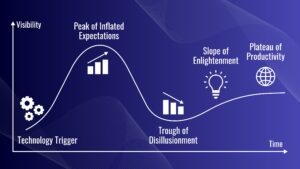
Focus on the Fundamentals for GenAI Success

(Ground Picture/Shutterstock)
Humans are prone to look for quick and easy solutions to life’s problems. The tendency toward thriftiness probably is programmed into our DNA. But when it comes to succeeding at generative AI, there are no silver bullets. However, focusing on fundamentals, such as good data governance and organizational change management, can get you closer to the GenAI goal.
It wasn’t that long ago that Hadoop was the tech savior that would set everybody on the path to everlasting big data riches. “There was this big notion of ‘Hey I’ve got this data, let’s get a jar of Hadoop and rub it on our data,’” is the poignant way that industry analyst Addison Snell, the CEO of Intersect360, put it at one of Tabor Communications’ conferences back in 2019.
Since OpenAI dispatched ChatGPT onto the world in late 2022, the tech savior du jour has been GenAI. Companies across industries are scrambling to develop and use large language models (LLMs) to build chatbots, co-pilots, and other GenAI apps that will streamline business operations and turbocharge worker productivity. It set off the biggest tech gold rush since Apple launched the smart phone in 2007.
But somewhere along the way to generative pre-trained glory, reality set in. Just as the Hadoop experiment exposed some rough edges, it turns out that getting real business value out of GenAI is harder than originally anticipated. To paraphrase Snell, we can’t simply get a jar of GPT and rub it on our data (well, we can try, but it probably won’t turn out well).
From Hype to Slog
In its recent Hype Cycle for Emerging Tech, Gartner said GenAI has reached the Peak of Inflated Expectations, and is now descending into the Trough of Disillusionment. For the true GenAI believers, that means the hard work of building something meaningful out of the tech has begun.
Apratim Purakayastha (AP), the CTO of the online training company Skillsoft, has seen the emerging tech hype curve play out in real life several times before, and says this one isn’t likely to be any different.
“I have observed this for years with mobile telephones, with the cloud, and now with generative AI,” AP says. “There’s initial significant hype about ‘It’s going to change our lives tomorrow.’ Then reality sets in and then there’s a slog.”
The slog in this case is doing the hard work of making GenAI work. It means finding appropriate use cases, matching the tech to the business needs in various industries, and diligently working on specific tasks, AP says. Not everyone will make it through the slog period, but eventually some will come out the other end with successful GenAI applications, he says.
“I believe generative AI will sustain,” he says. “I think it’s fundamentally a technology revolution. It will just take some time to really apply itself to various different business use cases. Eventually I think it’s impact will be pretty big.”
Change Management
AP envisions a world where networks of autonomous AI agents are communicating with each other to serve human needs, including performing mundane tasks like scheduling but also complicated ones like negotiating contracts. They will act, not just generate words. Just as networked computers changed society, networked GenAI will take us beyond where we are today. “I think there are exponential possibilities,” AP tells Datanami.
But getting to that promised land won’t be easy. One of the fundamental building blocks that companies will need to achieve GenAI success is change management–not the technical change management of DevOps and CI/CD, but the organizational change management of adopting something new.
“It’s much more than tech skills. Tech skills will be one element,” AP says. “But I think what we need is much more human skills and power skills: empathy, understanding of ethics, compliance, what is fair and what is unfair, what is transparent and what is not transparent, judgment, critical thinking. These are all the skills that I believe will be more and more in demand as this world evolves.”
Skillsoft recently partnered with Microsoft and will be sharing its classes around change management with the tech giant.
“Even Microsoft is realizing that having the best technology in this is not the success criteria. The success criteria is in adoption,” AP says. “It is really huge, because without change management, you will not get the ROI.”
Data Governance for GenAI
Another critical ingredient for GenAI success is data governance. Many companies that have struggled to implement GenAI successfully report that the poor state of their data is a leading cause in those failures.
“I think a lot of companies are finding out that their data is not in the best place to take advantage of some of these things,” says Tim Beerman, the CTO of Ensono, a provider of consulting and managed services for large companies. “Whether you’re doing ML, whether you’re writing just Power BI reports or reporting cubes, or now whether you wanted to use GenAI, you have to have really good data.”
Companies that attempted to take the quick and easy route and just slap an LLM model on their data found out the hard way that it doesn’t work very well.
“You don’t want to take a copilot and just open it up against every SharePoint site in the company, because then you start finding out really quickly that the things that we all should have been doing as IT professionals over the years, like good data management strategies, aren’t there,” he tells Datanami.
Things like document currency, or determining what is the most recent version of a document, sound easy in theory but can be difficult to do in practice. Setting up security boundaries and RBAC controls on internal data is critical to ensure that a company isn’t inadvertently exposing sensitive data through an LLM.
“That type of stuff is really foundational,” Beerman says. “If clients have done a really good job of managing their data, it’s a lot easier. But if you haven’t done that, then it gets back to good data practices, even before you start talking about Gen AI or any type of AI.”
Data Quality Is Job One
Data quality is foundational for Syniti, which today was acquired by Capgemini. The company (formerly known as Backoffice Associates) has developed a reputation for providing products and services that bolster data quality, particularly in big data migrations, such as SAP S/4 implementations.
“Data is a business problem,” says Syniti CEO Kevin Campbell. “I always tell people, every business problem has a data problem underneath, or every data problem is a business problem. And the problem is nobody wants to spend money to have great governance.”
Campbell has seen more than a few big ERP implementations and digital transformations go south for want of better data. “The number one reason they don’t go live is data,” he tells Datanami. “Data is the big problem, and everybody’s realizing that.”
There’s nothing magical about Syniti’s approach to helping companies improve their data, Campbell says. In many cases, it’s going back to the sources of data to mak sure it’s high quality, then monitoring for changes, and remediation. “It’s just the fundamentals,” he says.
Syniti follows a recipe for ensuring high data quality. The process typically starts with a data migration. Controls are then implement to improve the data quality. The next step is sustaining the high data quality. The final step is achieving data governance, where you have confidence that an end-to-end lifecycle for data quality has been firmly established.
“There’s other ways to do it, but it’s harder to convince people until they’ve felt the pain, and you can explain to them in detail with their data why it’s wrong,” Campbell says.
Today’s push to develop GenAI is causing a lot of pain for customers, he says. Companies are embarking upon GenAI proofs of concept (POCs) and discovering to their great chagrin that they have data quality issues halfway in.
“If your data is not ready for AI, your company’s not ready for AI,” Campbell says. “AI is exposing what most of us have known for a long time, which is garbage in, garbage out. So if you’ve got crappy data, you got to go work it out.”
Related Items:
Is the GenAI Bubble Finally Popping?
On the Origin of Business Insight in a Data-Rich World































